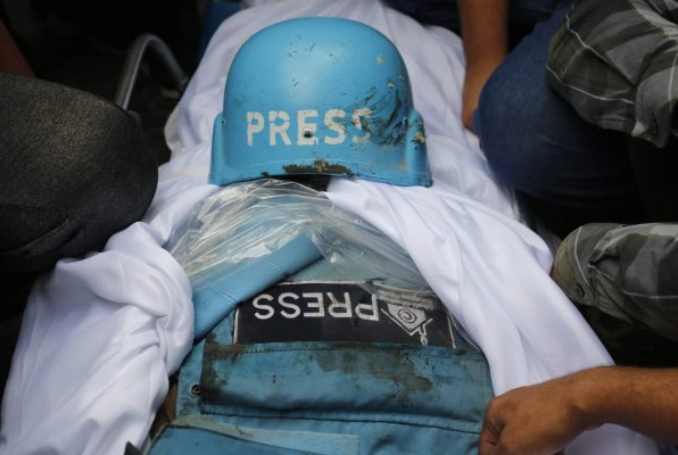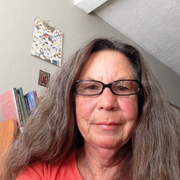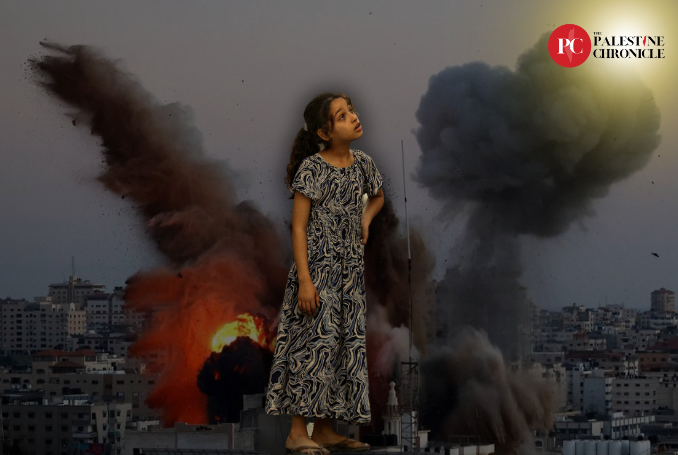
By Benay Blend
On October 25, 2013, Angela Davis delivered a speech at Birbeck University in London. Entitled “Closures and Continuities,” her talk drew from a freedom song that was popular in the American South during the 20th Century freedom movement.
Davis notes that the last line of each verse, a variation on the theme “they say freedom is a constant dying / we’ve died so long we must be free” (Angela Davis, Freedom is a Constant Struggle: Ferguson, Palestine, and the Foundations of a Movement, 2016, p. 61), represents a paradox: there is simultaneous resignation and promise, critique and inspiration, all acknowledging that someday the people must be free.
Asked to speak about the meaning of freedom in the sesquicentennial year of the US Emancipation Proclamation, along with the 50th anniversary year of watershed events in the 20th-Centuray Black freedom movement, Davis touched on many issues that are also relevant to Palestinians, who on October 7 will mark one year of their own resistance movement known as Al Aqsa Flood.
In an interview with George Abraham, Mohammad El-Kurd explains that Palestinians have their own version of resignation and promise, particularly in the daily sorrows of life under long-held occupation that lurks beneath their legendary sumud (steadfastness). Refusing to “hyperfocus” on Palestinians as victims in his poems, he says that not only does that flatten the characters, but he also implies that negotiation is impossible with people holding a gun.
In her speech, Davis also commemorated the 50th anniversary of Martin Luther King’s “Letter from a Birmingham Jail,” in which he explained his decision to organize in Birmingham even though he knew that he would be accused of outside agitation. In it he writes that his forebears survived two centuries of brutal slavery; therefore, he believed that present-day opposition to the movement would surely fail.
He also wrote that “injustice anywhere is a threat to justice everywhere,” thus linking the civil rights movement to other struggles against oppression. When he said that “we are caught in an inescapable network of mutuality, tied in a single garment of destiny,” he would not yet have included the Palestinian struggle for liberation. Yet his words clearly describe the present-day Axis of Resistance, including Lebanon, Yemen, and now Iran, countries that, in addition to the rhetoric of the Global South, are providing direct support to Palestine in its efforts to dismantle the Zionist state.
What Davis feared about many of these memorials was that they tend to rely on “historical closures,” events erroneously “represented as historical high points on the road to an ultimately triumphant democracy” (p. 64), an endpoint that Davis feels has yet to be resolved.
What had been accomplished was not solely due to leaders, but rather, Davis contends, because “ordinary people adopted a critical stance” towards what society erroneously deemed “unalterable, impenetrable” (p. 67) realities.
Similarly, revolutionary writer Ghassan Kanafani once said, “Bodies fall but ideas endure,” and this applies to all of the martyred leaders from Kanafani himself through Syed Hassen Nasrallah, Secretary General of Hezbollah, assassinated by Zionist airstrikes on Beirut, September 28, 2024.
“I assure all of you: to the enemy, to the friend, to the whole world,” Nasrallah explained. “You cannot eliminate Hezbollah, nor will you be able to eliminate the honourable resistance movements in Palestine. You will never be able to do so, because the resistance is not a conventional army, and because the resistance is, first and foremost, the people.”
Shortly after his death, Samidoun: Palestinian Prisoner Solidarity Network posted the following on their webpage: “Assassinations have little effect on the capabilities of the Resistance, for they cannot kill the ideology of resistance as it is not embodied in individual men but in the popular consciousness of the broad masses.”
Indeed, it is a eulogy that reiterates Davis’s faith in ordinary people to make change. “This collective consciousness,” she concludes, “emerged within the context of social struggles,” during the civil rights movement but also in the anti-colonial, anti-imperial movements of today.
While Davis focuses on temporal continuities, she also calls attention to horizontal continuities, links between a range of movements today, particularly, she adds the “ongoing sovereignty struggles in Palestine” (p. 75).
In Nakba: Palestine, 1948, and the Claims of Memory (2007), editors Lila Abu-Lughod and Ahmad H. Sa’di hone in on the idea of historical continuities, particularly Palestinian memory that they claim “struggles with and against a still much contested present” (“Introduction,” p. 3).
Abu-Lughod and Sa’di are interested in the ways that the past is “neither distant nor [ever] over” (p. 10). “Israel’s” genocidal assault on Gaza, now widened to the West Bank and Lebanon, are interwoven with the Nakba, perhaps the bloodiest attack since ’48 that is added to the daily Nakbas the people have endured for years.
In the early weeks of the siege, many residents compared the Zionists’ order for Palestinians in Northern and central Gaza to evacuate their homes with the experiences of their ancestors in 1948, particularly as “Israeli” warplanes targeted Palestinian vehicles as they left for an allegedly safer zone.
“The Palestinians,” write Abu-Lughod and Sa’di, “were, after the Nakba, up against a strong state with outside support, military might, and official archives. In these other hands was the apparatus of history production” (p. 16).
All of this is true today. In the United States, President Joe Biden, along with presidential hopeful Kamala Harris, expressed support for “Israel” after the assassination of Hezbollah leader Hassan Nasrallah.
“His death from an Israeli air strike is a measure of justice for his many victims, including thousands of Americans, Israelis, and Lebanese civilians,” Biden claimed, repeating the tired adage of imperialist countries that it is possible to free individuals by bombing them.
Biden, along with Harris and Western media, neglected to mention that “Israel” also murdered 33 civilians and injured 195 more in this airstrike on a densely populated area of Beirut.
“Israel gets away with its lies pertaining to the mass killings in Gaza, and now sadly in Lebanon, because Israeli propaganda is embraced by Western officials and journalists,” claims journalist Ramzy Baroud. “Perpetuating Israeli lies is dangerous, not only because truth-telling is a virtue but also because words kill and dishonest reporting can, in fact, succeed in justifying genocide.”
“The past, represented by the Nakba,” write Abu-Lughod and Sa’di, “is not past” (p. 18). What happened in 1948 continues to this today. What has changed is that journalists like Baroud are now challenging the official story, and telling others to do the same:
“Dear Arab and Middle Eastern media that claim to be ‘independent’. When 90 percent of your coverage of Gaza and Lebanon comes from western news agencies and US/western and Israeli official and non-official sources, you are, though maybe unwittingly nothing but a mouthpiece. Please utilize your resources to do real journalism. Diversify your sources, speak to the people on the street. Invest in real investigative work. Do your own reporting. Stop cutting and pasting the western media rubbish. If we are to ever reclaim our collective narrative, we need to write our own story.”
In Our History is the Future: Standing Rock Versus the Dakota Access Pipeline, and the Long Tradition of Indigenous Resistance (2019) tells a similar story of the Lakota. While settler colonialism continues to inform their present, Estes also traces the long history of Indigenous resistance.
“In its best moments,” claims Estes, “#NoDapl showed us a future that becomes possible when everyday Native peoples take control of their own destines and lands, while drawing upon their own traditions of resistance” (p. 22), and doing so in much the same way that Palestinians are drawing on their own practice of resistance refined over the past 76 years.

– Benay Blend earned her doctorate in American Studies from the University of New Mexico. Her scholarly works include Douglas Vakoch and Sam Mickey, Eds. (2017), “’Neither Homeland Nor Exile are Words’: ‘Situated Knowledge’ in the Works of Palestinian and Native American Writers”. She contributed this article to The Palestine Chronicle.







